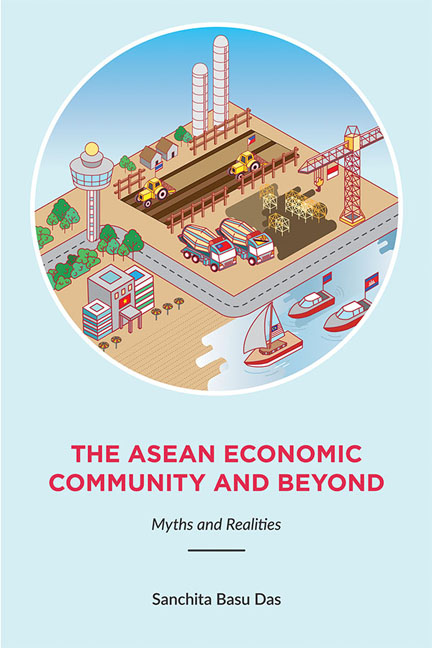Book contents
- Frontmatter
- Dedication
- Contents
- Foreword
- Acknowledgements
- Abbreviations
- 1 Introduction: The ASEAN Economic Community and Beyond
- I THE ASEAN ECONOMIC COMMUNITY (AEC)
- II BEYOND THE ASEAN ECONOMIC COMMUNITY
- III AN ASEAN PERSPECTIVE OF REGIONAL CONNECTIVITY
- Appendix: Summary of the Trans-pacific Partnership Agreement
- Index
- About the Author
Appendix: Summary of the Trans-pacific Partnership Agreement
Published online by Cambridge University Press: 19 May 2017
- Frontmatter
- Dedication
- Contents
- Foreword
- Acknowledgements
- Abbreviations
- 1 Introduction: The ASEAN Economic Community and Beyond
- I THE ASEAN ECONOMIC COMMUNITY (AEC)
- II BEYOND THE ASEAN ECONOMIC COMMUNITY
- III AN ASEAN PERSPECTIVE OF REGIONAL CONNECTIVITY
- Appendix: Summary of the Trans-pacific Partnership Agreement
- Index
- About the Author
Summary
At the time of going to press, the TPP negotiations among the twelve participating countries were completed on 4 October 2015, subject to approval by the member countries’ governments and parliaments before taking effect. Since this publication includes analytical articles written till June 2015, a summary of the TPP Agreement as published on the United States Trade Representatives (USTR) website is provided for readers’ knowledge. It does not contain specifics of what has been agreed during the negotiations as technical details still need to be ironed out before the agreement can be made public.
Summary of the Trans-Pacific Partnership Agreement
Source: <https://ustr.gov/about-us/policy-offices/press-office/press-releases/2015/october/summary-trans-pacific-partnership>.
On October 4, 2015, Ministers of the 12 Trans-Pacific Partnership (TPP) countries — Australia, Brunei Darussalam, Canada, Chile, Japan, Malaysia, Mexico, New Zealand, Peru, Singapore, United States, and Vietnam — announced conclusion of their negotiations. The result is a high-standard, ambitious, comprehensive, and balanced agreement that will promote economic growth; support the creation and retention of jobs; enhance innovation, productivity and competitiveness; raise living standards; reduce poverty in our countries; and promote transparency, good governance, and enhanced labor and environmental protections. We envision conclusion of this agreement, with its new and high standards for trade and investment in the Asia Pacific, as an important step toward our ultimate goal of open trade and regional integration across the region.
KEY FEATURES
Five defining features make the Trans-Pacific Partnership a landmark 21st-century agreement, setting a new standard for global trade while taking up next-generation issues. These features include:
• Comprehensive market access. The TPP eliminates or reduces tariff and non-tariff barriers across substantially all trade in goods and services and covers the full spectrum of trade, including goods and services trade and investment, so as to create new opportunities and benefits for our businesses, workers, and consumers.
• Regional approach to commitments. The TPP facilitates the development of production and supply chains, and seamless trade, enhancing efficiency and supporting our goal of creating and supporting jobs, raising living standards, enhancing conservation efforts, and facilitating cross-border integration, as well as opening domestic markets.
• Addressing new trade challenges. The TPP promotes innovation, productivity, and competitiveness by addressing new issues, including the development of the digital economy, and the role of state-owned enterprises in the global economy.
- Type
- Chapter
- Information
- The ASEAN Economic Community and BeyondMyths and Realities, pp. 259 - 278Publisher: ISEAS–Yusof Ishak InstitutePrint publication year: 2015

